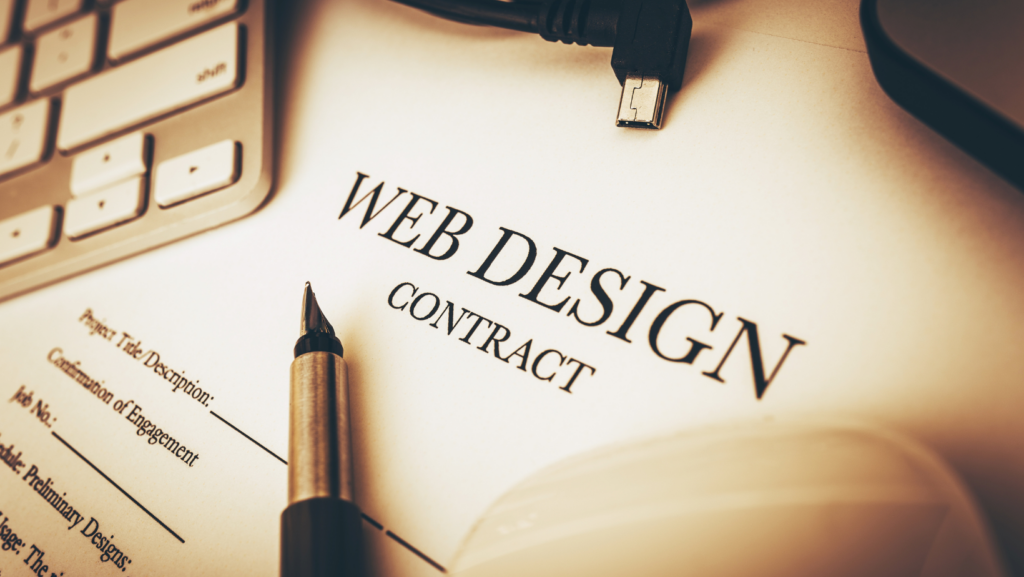Navigating the digital landscape can be a daunting task, especially when it comes to web design contracts. These essential documents can make or break a project, ensuring that both parties—web designers and clients—are on the same page.
This article will shed light on the intricate details of web design contracts, unraveling their complexity, and making them more accessible. Whether you’re a seasoned web designer or a business owner looking to hire, understanding these contracts is crucial.
So, let’s dive into the world of web design contracts, where clarity meets creativity, and innovation is bound by agreement. Get ready to explore, learn, and most importantly, gain the confidence to handle your next web design project with ease.
Web Design Contract

When navigating the realm of web design, a contract serves as a critical guidance map. Let’s delve into the basics of what a web design contract is and why it is important.
A web design contract, by definition, represents an agreement. It brings structure to the business relationship between a web designer and a client. Web design contracts outline the scope of work, project timelines, payment details, and terms and conditions. Clear contracts prevent misunderstandings, setting crystal-clear expectations for both parties. They lay out what the client wants done, including essential elements such as site structure, the color scheme, and any specific functionality required. They also detail what the designer commits to operating within specified constraints, like the project budget and deadline.
Why Are Web Design Contracts Important?

Contracts hold immense importance in the web design sphere beyond being merely written agreements. They secure a foundation for a smooth project execution, minimizing the prospect of disagreements. Confusion around deliverables, payment schedules, or project timelines can be detrimental, that’s where contracts come to salvage. Besides, contracts can also protect against non-payment, scope creep (extra work not initially stipulated), or a sudden termination of services.
Moreover, web design contracts reinforce trust. When clients see their expectations articulated clearly in a contract’s clauses, it bolsters their faith in the designer’s professionalism. From the flip side, a well-documented contract assures designers they can focus on creativity and innovation, undeterred by concerns around ambiguity in roles and responsibilities.
Ultimately, a robust web design contract aligns expectations, heightens confidence, and paves the way for successful project completion.
Key Elements of a Web Design Contract

A web design contract’s structure comprises specific, integral elements, each bearing significant implications and responsibilities. These encompass the Scope of Work, Timeline and Milestones, Payment Terms, and Intellectual Property Rights.
Scope of Work
The Scope of Work defines tasks, deliverables, and services that the designer agrees to provide. It’s an exact breakdown of the assignments, including specifics such as website design, programming, testing, and implementation. For example, it might specify the creation of a responsive web design, compatible with various devices like desktops, laptops, tablets, and mobile phones.
Timeline and Milestones
The work schedule, outlined in the Timeline and Milestones, ensures smooth and timely execution of tasks. This section includes details about project commencement dates, milestones, and final delivery. For instance, after a project starts on a specific date, milestone 1 might be preliminary design submission, milestone 2 – ready for client review, and the final milestone – launching the website.
Payment Terms
Payment Terms present a breakdown of the designer’s remuneration. It stipulates how much, when, and in what form the client must compensate the designer’s services. For instance, the terms may mark 40% due at project kickoff, another 40% at approval of design, and remaining 20% at project completion.
Intellectual Property Rights
The clause of Intellectual Property Rights protects the vested interests of both parties. It determines who owns the copyright of the designs, content, and underlying code. For instance, the contract could state that upon full payment, the client receives exclusive, unrestricted rights to the design and content. Conversely, the designer retains the rights to the underlying code.

